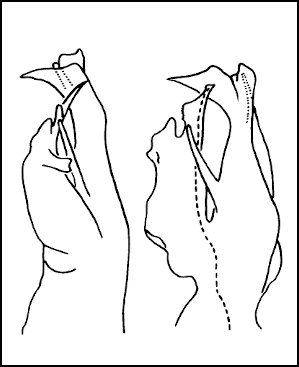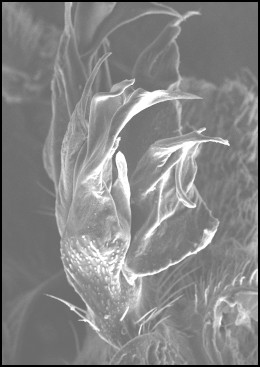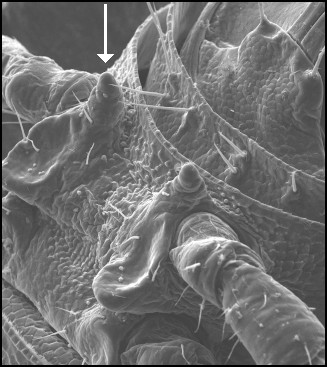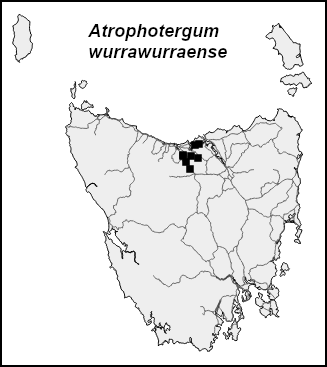Polydesmida: Dalodesmidae: Atrophotergum
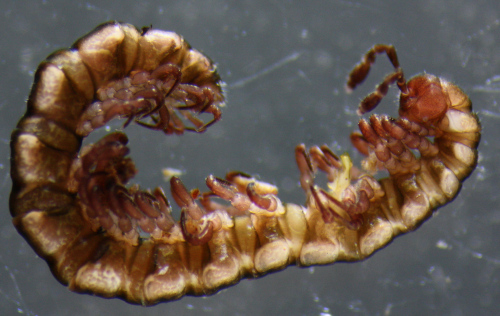
Freshly preserved A. silvaticum male. Long-preserved specimens are pale yellow or white.
The six named species in this endemic H+19 genus all live in the upper layers of forest and scrub litter. All six species tolerate considerable habitat disturbance, and the northwest species A. bonhami and A. silvaticum are found in pine and eucalypt plantations. A seventh, undescribed species has been found in the northwest.
Male Atrophotergum are larger than females, which is unusual in Polydesmida, and the named species have peculiar, finger-like processes on the rear of the last sternite (see images below). Living animals typically have a reddish head and legs contrasting with a yellow, green or brown trunk (depending on species), but the trunk colour fades in alcohol.
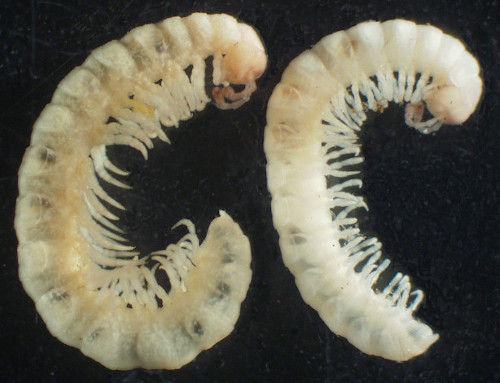
A. montanum male (left) and female (right). Atrophotergum males have disproportionately large body segments towards the rear of the body.
Atrophotergum bonhami Mesibov, 2004
Pale-coloured species from north central Tasmania, 8-10 mm long. Projection on last sternite (arrow) short. Overlaps in distribution with A. silvaticum and A. wurrawurraense.
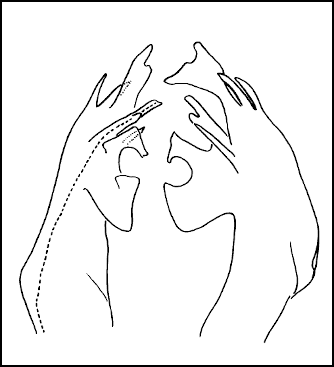
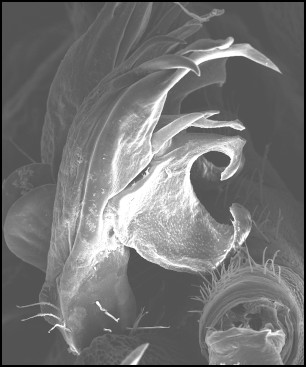
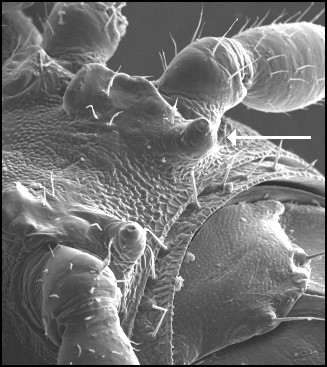

Atrophotergum montanum Mesibov, 2004
Pale to light brown species, widespread and abundant in central Tasmania, 12-14 mm long. Projection on last sternite (arrow) hard to detect.
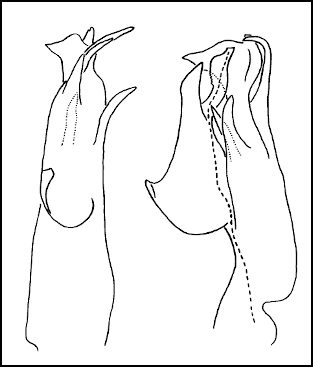
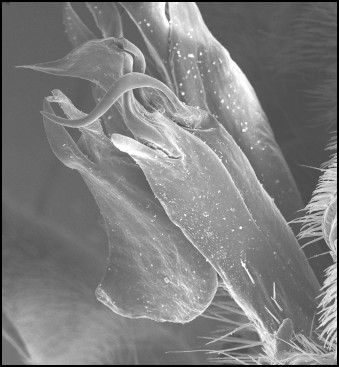
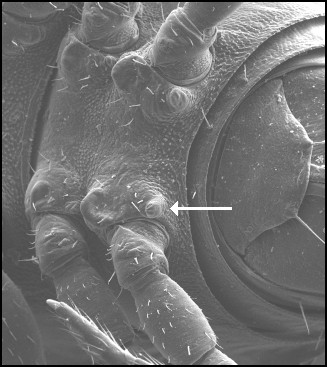
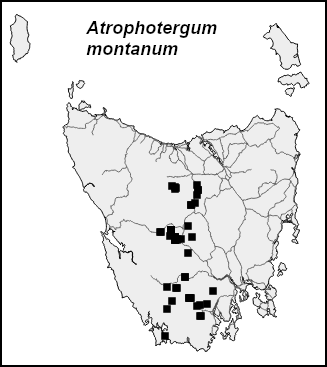
Atrophotergum pastorale Mesibov, 2004
Light yellow to light brown species, widespread and abundant in eastern Tasmania, 8-10 mm long. Projection on last sternite (arrow) long. Overlaps with A. sodalis with some local parapatry. The one northwest record is from a eucalypt plantation and is likely to be a translocated colony.
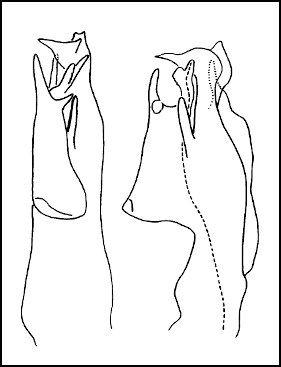
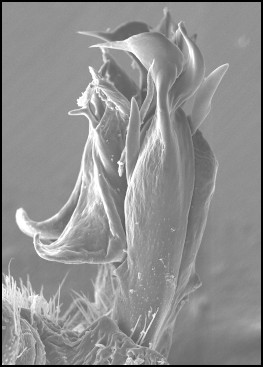

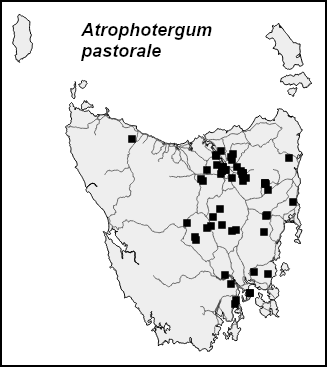
Atrophotergum silvaticum Mesibov, 2004
Light to medium brown species, abundant in the northwest, 8-10 mm long. Projection on last sternite (arrow) short.

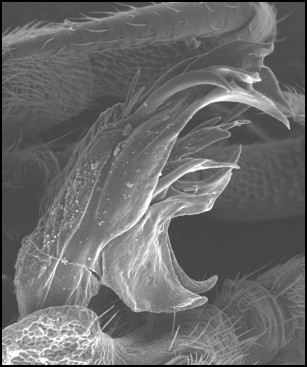
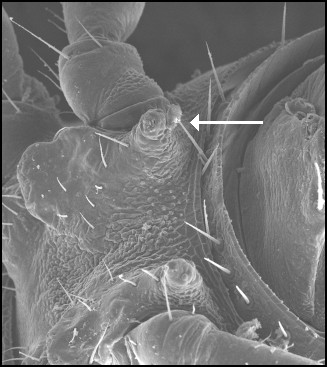
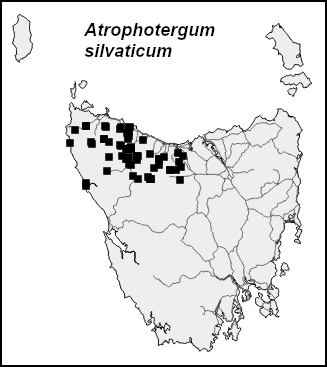
Atrophotergum sodalis Mesibov, 2004
Light yellow to light green species, common in the northeast, 7-8 mm long. Projection on last sternite (arrow) short. Overlaps with A. pastorale with some local parapatry. Also on Flinders Island.
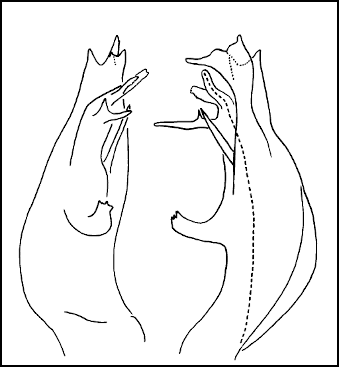
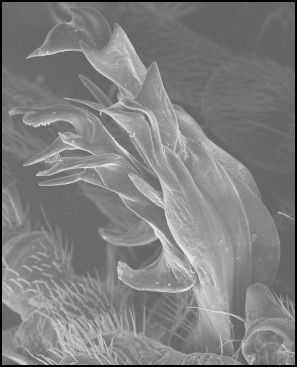
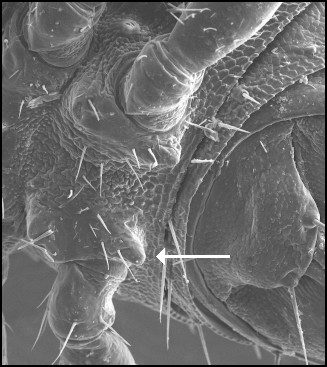
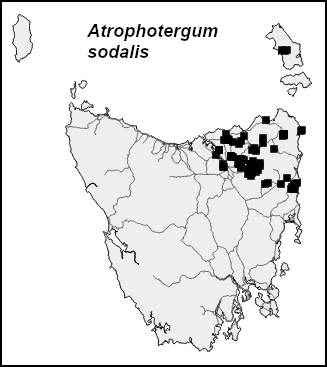
Atrophotergum wurrawurraense Mesibov, 2004
Pale to light brown species, uncommon in a small area in north central Tasmania, 6-7 mm long. Projection on last sternite (arrow) short but distinct. Overlaps with A. bonhami.
